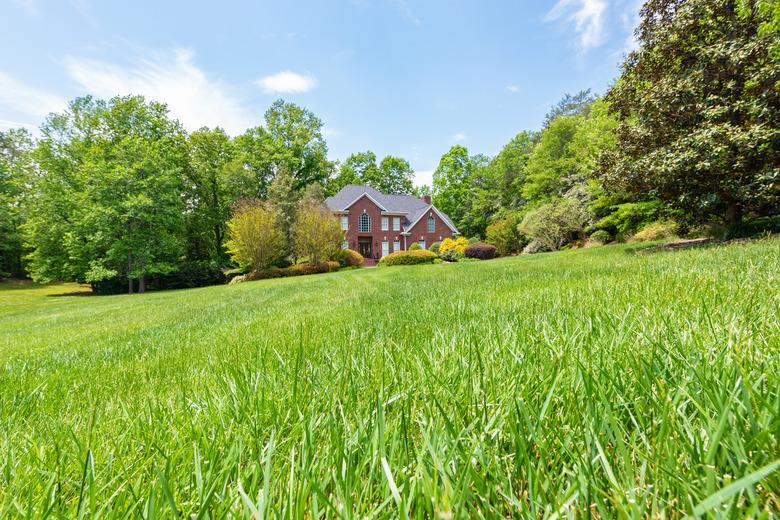Does Fescue Grass Spread?
Fescue came to the attention of gardeners as a shade plant and one of the few types of lawn grass that will grow and thrive in the shade. New cultivars have been bred that improve fescue grasses in a variety of ways, including heat and drought tolerance. If you are thinking of a new lawn, keep fescue on the list, at least until you get an overview of its advantages and disadvantages.
Tip
Fescue grass is not one of the grass species that spreads rapidly through underground rhizomes or stolon-type stems. Fescue is bunch grass that spreads slowly.
Meet Two Common Types of Fescue
There are hundreds of different grass species in the genus Festuca, each with its own specific uses and care requirements, but most people who plant fescue in a lawn select either fine fescue or tall fescue.
The primary difference between the two is the breadth of each grass stem. Fine fescue, as the name indicates, grows narrow, fine-leaf blades. It thrives in hot, sunny areas as well as shady sections and can be mowed like regular grass.
The classic tall fescue grasses are turf-type grasses with wide leaf blades that are slow-growing and perfect for shady areas. They only need occasional mowing, and their care is minimal since they require much less water and nutrients to be happy than other types of traditional lawn grasses.
Understand Warm- and Cool-Season Grasses
Anyone putting in a lawn must choose between two categories of grass, called warm-season grass and cool-season grass. Warm-season grass types grow best when it's warm or even hot thanks to an extensive root system. They dry up and go dormant during the winter months, looking quite dead, and then break dormancy in May and grow into September. The primary warm-season grasses are bahia grass, Bermuda grass, centipede grass, St. Augustine grass, and zoysia grass.
In contrast, cool-season grasses grow best when temperatures are cool. These grasses, including fescues and Kentucky bluegrass, start growing actively in early spring and keep right on going while it is fairly cool and rainy. In hot summers, they go dormant if they do not receive ample irrigation, and even with regular water, they grow slowly in heat. During winters, cool-season grasses suspend their growth and form complex sugars, which function as antifreeze.
Consider Grass Growth Habits
Warm-season grasses are called "spreading grass types." That's because these grass types spread rapidly either with underground roots called rhizomes or above-ground stems called stolons.
However, grasses like fescue are bunch grasses. They do not have thick underground roots or stolons. They grow upright in bunches, and those bunches spread slowly. It takes fescue grass much longer to cover a lawn than spreading grass types. On the other hand, they grow well in shade and can do well in areas that get up to six hours of sun.
